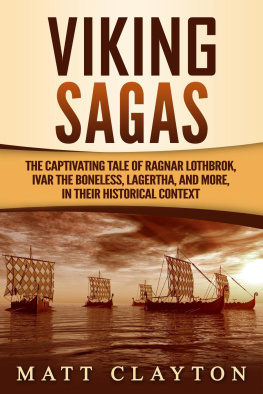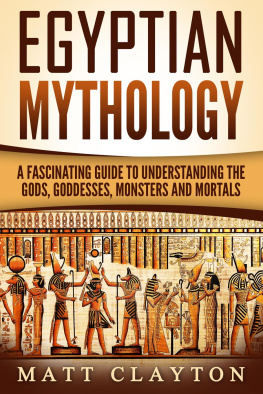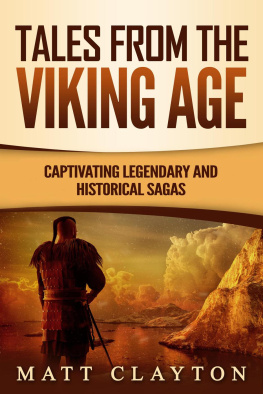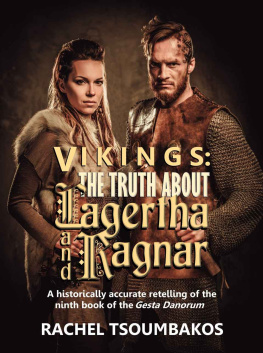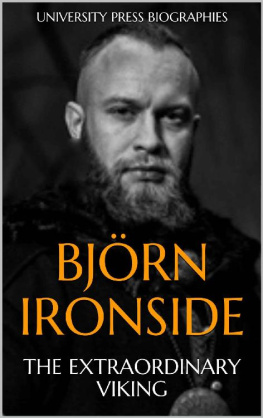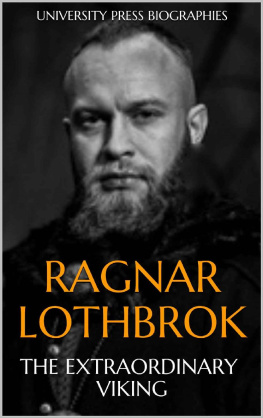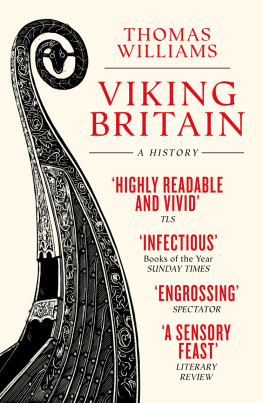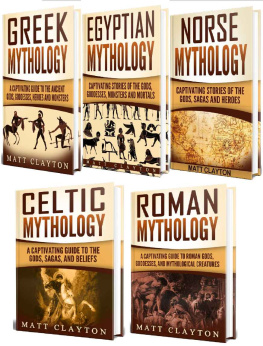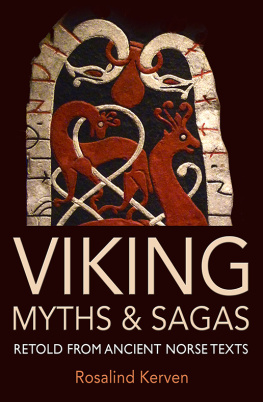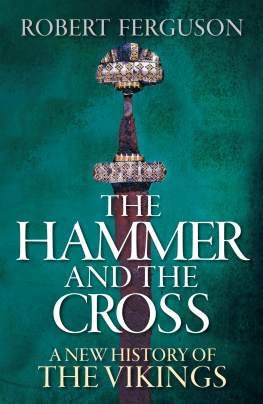Viking Sagas
The Captivating Tale of Ragnar Lothbrok, Ivar the Boneless, Lagertha, and More, in Their Historical Context
Copyright 2020
All Rights Reserved. No part of this book may be reproduced in any form without permission in writing from the author. Reviewers may quote brief passages in reviews.
Disclaimer: No part of this publication may be reproduced or transmitted in any form or by any means, mechanical or electronic, including photocopying or recording, or by any information storage and retrieval system, or transmitted by email without permission in writing from the publisher.
While all attempts have been made to verify the information provided in this publication, neither the author nor the publisher assumes any responsibility for errors, omissions or contrary interpretations of the subject matter herein.
This book is for entertainment purposes only. The views expressed are those of the author alone, and should not be taken as expert instruction or commands. The reader is responsible for his or her own actions.
Adherence to all applicable laws and regulations, including international, federal, state and local laws governing professional licensing, business practices, advertising and all other aspects of doing business in the US, Canada, UK or any other jurisdiction is the sole responsibility of the purchaser or reader.
Neither the author nor the publisher assumes any responsibility or liability whatsoever on the behalf of the purchaser or reader of these materials. Any perceived slight of any individual or organization is purely unintentional.
Table of Contents
Introduction: The Viking Age
T he period between the end of the eighth century ce and the middle of the eleventh is often called the Viking Age because this is the period in which Scandinavian people expanded their contacts with the outside world through trade, raiding, exploration, and colonization. This expansion was driven by improvements in shipbuilding technology combined with a culture that valued personal reputation, courage, and martial skill as essential components of ones character, at least for the male portion of the population.
Archaeological evidence can tell us much about how early Scandinavian people lived and died, but it can only take us so far. It is not until the Viking Age that we begin to have enough written evidence to reconstruct aspects of early Scandinavian history and culture. Writing other than runes, which were used for magical and religious purposes, for monuments, or for identifying possessions, was unknown in Scandinavia until the advent of Christianity, which began with Anglo-Saxon missionary efforts in the early eighth century and had taken hold throughout Scandinavia by the twelfth century. The earliest Scandinavian documents, therefore, date from the twelfth century, the period during which Christianity became widespread.
The limited contacts between Scandinavia and more southerly countries all changed in the late eighth century, and the shift is usually dated to the sudden increase in large-scale Viking raids on important religious and political centers, such as the monasteries of Lindisfarne in England in 793 and Iona in Scotland in 795. Incursions into Frankish territory, part of which encompassed areas in what are now France, Germany, and the Low Countries, followed in 799. Further attacks on cities in England and the Frankish Empire increased throughout the ninth century, including the sack of Paris in 845 by a Viking named Ragnar (who may or may not have been the Lothbrok of the saga) and the invasion of England by the so-called Great Army in 879.
Most often we know of these attacks not from the perspective of the Vikings themselves but rather from the point of view of their victims and the later medieval historians who recorded what they knew or had been able to learn of these events. Medieval chronicles, usually compiled by clergy in the Frankish Empire or in England, are important primary sources for the activities of Vikings at this time, and it is this view of Vikings as intrepid explorers and vicious plunderers that is at the core of modern popular conceptions about medieval Scandinavian culture.
However, the Viking Age was about much more than longships full of fierce warriors sailing across the seas and down rivers in order to pillage whatever and slay whomever they came across. Medieval Scandinavians also led complex lives that revolved around agriculture, artisanal crafts, and trade, none of which is as exciting to the imagination as a warriors raid but which stood at the vital economic center of medieval Scandinavian life.
One important product of medieval Scandinavian culture is the corpus of sagas and poetry that first began to be recorded in writing in the twelfth century, although much of that corpus was composed significantly earlier and handed down through oral tradition. The Saga of Ragnar Lothbrok is one of these products, combining what may be a grain or two of historical fact with some fairy-tale episodes, connections to other aspects of Norse mythology, and a good helping of Viking derring-do.
This volume presents a version of Ragnars saga compiled from different modern sources, along with information providing additional historical and documentary context, followed by a discussion of some aspects of modern appropriations and representations of ancient Norse culture. The first section of the book provides historical context for Ragnars saga through an exploration of daily life in ninth-century Scandinavia and of contemporary Viking culture and history. The text of the saga itself forms the second part of the book, along with notes giving further information about how this version of the saga is presented and about elements within the story that might not be familiar to modern readers. The third section of the book deals with representations of ancient Norse cultures in modern popular media. Because this last topic is too large and too complex to be thoroughly explored in this current volume, I will focus on two areas: dragons in the writings of J. R. R. Tolkien and the conflicts between drama and history in the recent television miniseries, Vikings , which itself is based, in part, on the Saga of Ragnar Lothbrok and the Tale of Ragnars Sons . And because the Saga of Ragnar Lothbrok has important connections to another Icelandic saga, the Saga of the Volsungs , a synopsis of Volsungs is provided in an appendix.
The Viking Age is a historical period rich with art, poetry, literature, trade, exploration, and battles. The Saga of Ragnar Lothbrok is a product of that time and presents to us a story of Vikings not only as they actually may have been, at least in part, but also as they wished to be seen and remembered by later generations. And we still do remember them, over a thousand years after they sailed in search of plunder, trade, and new lands.
Next page
